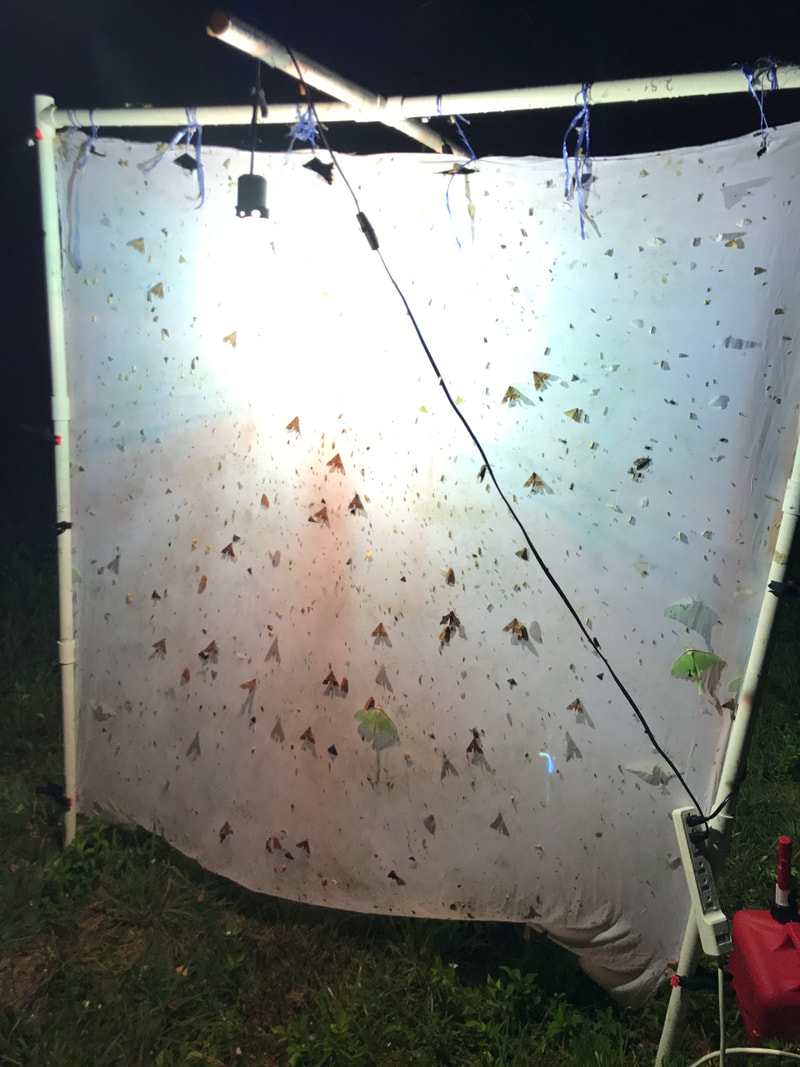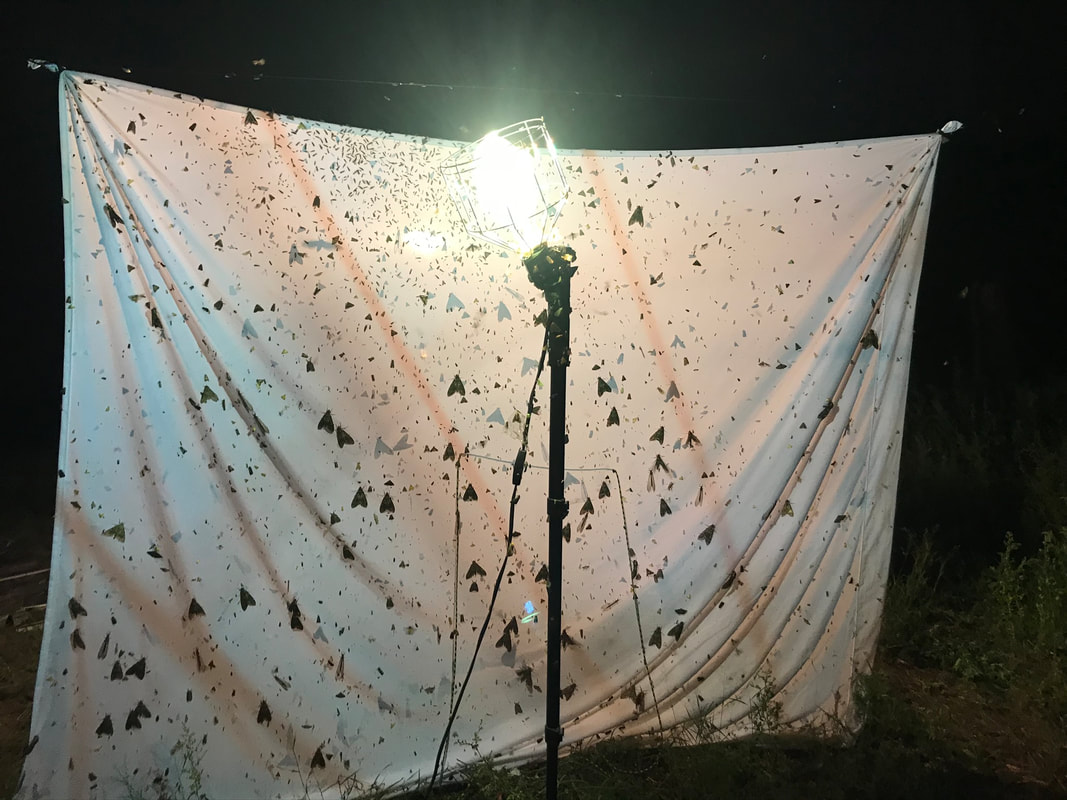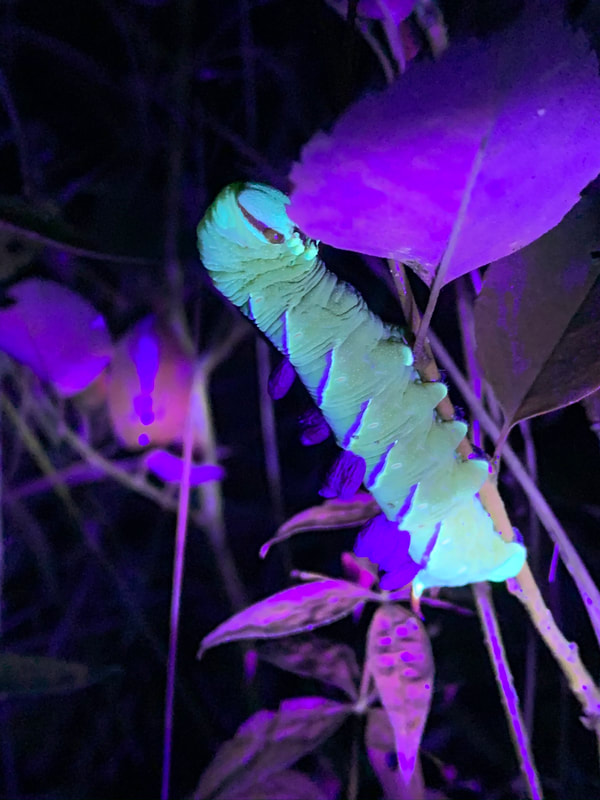|
Sphingidae of the United States was a small idea at first. In fact, it wasn’t even Sphingidae of the United States. This website was once going to be a coffee table book outlining the Sphingidae of Massachusetts in great detail. Well, as Teá Montagna worked on this project, she quickly realized that with the 41 species of sphingid found in Massachusetts, she was halfway to covering the East Coast… which meant halfway done with the country.
Just like that, Sphingidae of the United States (SphingidaeUSA for short) was born. Teá realized that this task would not be easy, thankfully, Stephen Kloiber was willing to help, and quickly became a co-author. Between the two authors, they had lots of photographs of Sphingidae adults and larvae, and lots of rearing notes and data, but it wasn’t complete. They began to ask around entomological communities hoping to obtain more photographs of species and additional notes to help fill out the website. The response from the community was great, with many people allowing their photographs to be used, or supplying data. To this day, Sphingidae USA relies on community data to help ensure that this website is as complete and up to date as possible. It wasn’t until May 2nd, 2018 that the website launched. This website currently has over 63 species represented but aims to begin adding more in early 2019 with the website being completed for all states but Hawaii in late 2025. The aim of this website is to give comprehensive information about every species of sphingid found in the USA. This means range, ecology information, full life histories with images, hostplant data, and assorted facts and measurements (proboscis length, wingspan, etc.) for every species found in the USA (128!). The data is from many different sources including the author’s own notes, all compiled into a user-friendly site complete with citations and links to external websites. There are interactive keys on the website to help you identify sphingid larvae, a Hostplant Index that allows you to view hostplant records, several guides to identify sphingid adults, many diagrams about anatomy, a glossary, species pages, range maps and state-level data, and much more. The website is still in its infancy and updates will be happening regularly. Thank you for reading! Since this website does rely on the community at large, please feel free to share this page, write us a review, give us feedback, or submit photos for display on the site. We strive to have the most complete and up to date information on this site, if you notice an error or have a correction, no matter how small, shoot us an email with a subject at [email protected] so we can fix it. If you wish to support this website, there is a donate link, as well as our store shop (hosted on Etsy) full of wonderful educational Sphingidae art. Thank you, Teá Montagna, Dan Montagna, and Stephen Kloiber October 2, 2018 About the Authors
Teá Montagna is a PhD Candidate at the University of Massachusetts Boston. She has been studying Sphingidae (and other Lepidoptera) for over 13 years. She graduated with a Bachelors in Science with a concentration in Wildlife Studies from Northeastern University in May of 2018. Since she was 14, Teá has been working with insects. She has worked in butterfly gardens, for the Department of Agriculture in Massachusetts, conducted various survey work for local organizations, and maintains a large insect collection of over 6000 specimens. She also maintains a worldwide collection of Sphingidae. Her research is focused on the life history and ecology of Sphingidae. Through this work, she has reared about 32% of Sphingidae in the continental USA as well as seen 41% of them as adults. When she's not actively working on one of her many projects, you can find Teá playing with her rabbit, exploring beautiful landscapes, or practicing her photography techniques. Teá is the creator of Sphingidae of the United States of America and continues to work on the back-end of the site creating new and updating old content, maintaining the various databases found on the website, and trying to find new pictures and information to help enhance the website. Dan Montagna is a PhD Student at the University of Massachusetts Boston. While he is not a Lepidopterist, he is an extremely talented scientist, and an invaluable member of this team. Dan has been working with SphingidaeUSA since 2018 and has helped with field work, rearing, photography, collections, and technical support. Dan can often be found assisting Teá in the field during the summer and helping to collect, ID, and prepare moth specimens. His technical knowledge has been invaluable for designing and implementing the various indices that SphingidaeUSA uses. When he is not helping with SphingidaeUSA, he is researching Parkinson’s disease and working with cells. Stephen Kloiber is an independent researcher living in the Poconos region of Pennsylvania who has studied Lepidoptera for over 7 years. He graduated from East Stroudsburg University in East Stroudsburg with a Bachelors in Science. For many years, Stephen has maintained a collection of Lepidoptera and Coleoptera, rears many species of Lepidoptera, and has worked with the Northampton County Mosquito Control. His knowledge is really highlighted with his rearing expertise and has contributed to the information on this website immensely. When he’s not working on Sphingidae USA or taking research trips with Teá, he assists with bird banding and surveys throughout eastern Pennsylvania. He enjoys being outdoors, playing with dogs, and finding the US’s native reptiles and amphibians. Stephen is the co-author of Sphingidae of the United States of America and continues working on the website by rearing species of Sphingidae, taking invaluable photos of caterpillars in field settings or in UV light, and coordinating the social media management. |
|


